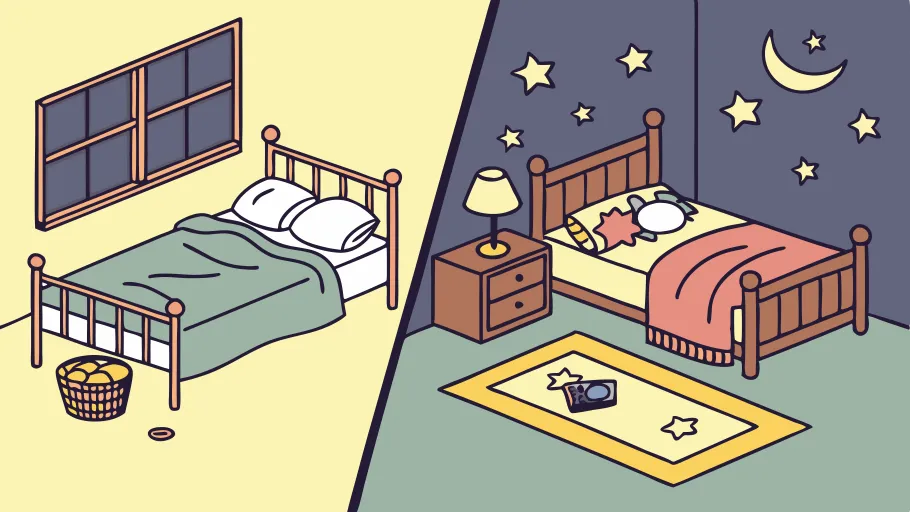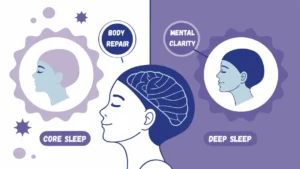Picture this: Sarah wakes up to find her husband John thrashing violently in bed, appearing to fight off invisible attackers. His shouts startle her awake, and she quickly moves away to avoid getting hurt. By morning, John remembers nothing except fragments of a disturbing dream. This frightening scene happens every night for millions of people worldwide who suffer from REM Sleep Behavior Disorder (RBD).
If you or someone you love experiences similar episodes, you’re not alone. This comprehensive guide explores proven natural treatment for REM sleep behavior disorder options that can help manage symptoms safely and effectively.
What is REM Sleep Behavior Disorder
REM Sleep Behavior Disorder is a sleep condition where people physically act out their dreams during the rapid eye movement (REM) stage of sleep. Normally, your body experiences temporary muscle paralysis during REM sleep, preventing you from moving while your brain stays active with dreams. In RBD, this protective mechanism fails, allowing you to move and potentially hurt yourself or others.
This disorder affects less than 1% of the general population but is more common in older adults, especially men over 50. Research shows that 80-90% of people with unexplained RBD may eventually develop neurodegenerative conditions like Parkinson’s disease, Lewy body dementia, or multiple system atrophy.
Common Signs and Symptoms
People with RBD typically experience:
- Physical movements that match their dream content, including kicking, punching, or jumping from bed
- Vocalizations like talking, shouting, or emotional outcries during sleep
- Dreams that often involve defending against threats or being chased
- Ability to recall dream details upon waking that match their physical actions
- Episodes that can range from mild to severe, occurring occasionally or multiple times per night
The Connection Between Sleep Apnea and REM Sleep
An important consideration in RBD management is the relationship between sleep apnea and REM sleep. Studies show that 34-61% of RBD patients also have obstructive sleep apnea (OSA). Severe sleep apnea can sometimes mimic RBD symptoms or hide true RBD by breaking up REM sleep and shortening its duration.
Interestingly, treating sleep apnea with CPAP therapy can sometimes reveal underlying RBD by allowing for more solid REM sleep. In some cases, CPAP treatment has improved RBD symptoms, with one study showing that 74.2% of patients with both conditions experienced better RBD symptoms after CPAP treatment.
This connection highlights why comprehensive sleep evaluation is crucial, as treating coexisting sleep disorders may be essential for managing RBD effectively. Getting quality sleep is fundamental to overall health and can significantly impact RBD symptoms.
Leading Natural Treatment: Melatonin for RBD
Melatonin has emerged as the top natural treatment for REM sleep behavior disorder. This hormone, naturally produced by your pineal gland, helps regulate sleep-wake cycles. As a supplement, melatonin works by suppressing REM sleep motor activity and restoring normal REM sleep patterns that are disrupted in RBD.
How Melatonin Works for RBD
Under normal conditions, REM sleep episodes become longer and more intense throughout the night. This pattern is lost in RBD patients. Melatonin helps restore these natural patterns while reducing muscle activity during REM sleep.
Multiple studies have demonstrated melatonin’s effectiveness for RBD. It can significantly reduce clinical symptoms and decrease the percentage of REM sleep without the normal muscle paralysis. In one double-blind, placebo-controlled study, melatonin decreased abnormal REM sleep from 39.2% to 26.8%.
Melatonin Dosage for REM Sleep Disorder
The typical starting melatonin dosage for rem sleep disorder is 3 mg taken at bedtime. Based on how you respond, your doctor may gradually increase the dose in 3 mg increments up to 15 mg. Most patients respond well to 6 mg, though effective doses can range from 3-12 mg.
Important: A doctor must determine the right dose based on your age, overall health, and symptom severity. Never self-medicate without medical supervision.
Benefits of Melatonin Over Conventional Treatments
Melatonin offers several advantages over traditional medications like clonazepam:
- Fewer side effects and better tolerance
- Limited drug interactions, especially important for elderly patients on multiple medications
- Continued benefits that may last for days or weeks after stopping
Potential Side Effects
While generally well-tolerated, some people may experience:
- Morning headaches
- Morning sleepiness or grogginess
- Delusions or hallucinations (rare, typically resolves with lower dosage)
Look for melatonin products with the U.S. Pharmacopeia Verification Mark, which ensures the supplement contains the stated dose.
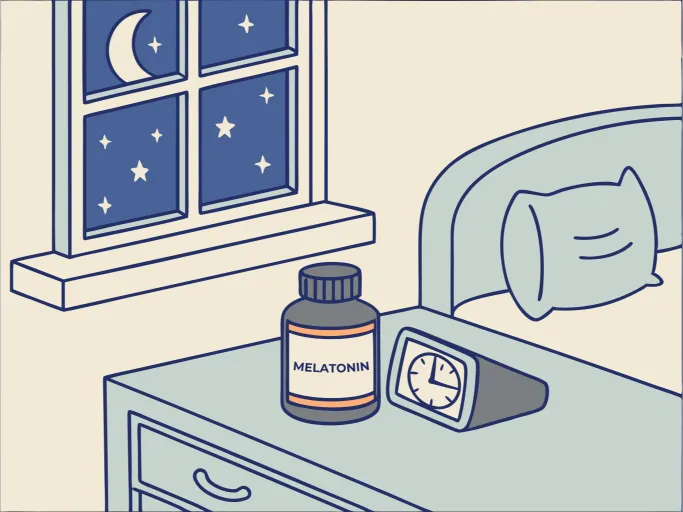
Creating a Safe Sleep Environment
Safety measures in the bedroom are absolutely essential for preventing injuries in RBD. The American Academy of Sleep Medicine strongly recommends these modifications as a crucial part of RBD management.
Essential Safety Modifications
- Remove potentially dangerous objects from the bedroom, including weapons, sharp objects, and breakable items
- Move furniture away from the bed or pad sharp corners and edges
- Place the mattress on the floor or use a bed with padded rails
- Add soft carpet, rugs, or mats next to the bed to cushion potential falls
- For ground floor bedrooms, ensure windows and doors are properly secured
- Consider using a larger bed to minimize the chance of injuring a sleep partner
Protecting Your Sleep Partner
Bed partners are at risk of injury during RBD episodes. Safety measures include:
- Sleeping in separate beds until symptoms are controlled
- Placing a barrier like pillows between the person with RBD and their partner
- In severe cases, sleeping in separate rooms until treatment takes effect
One innovative approach involves using two twin beds separated by a plexiglass barrier, allowing couples to stay close while ensuring safety.
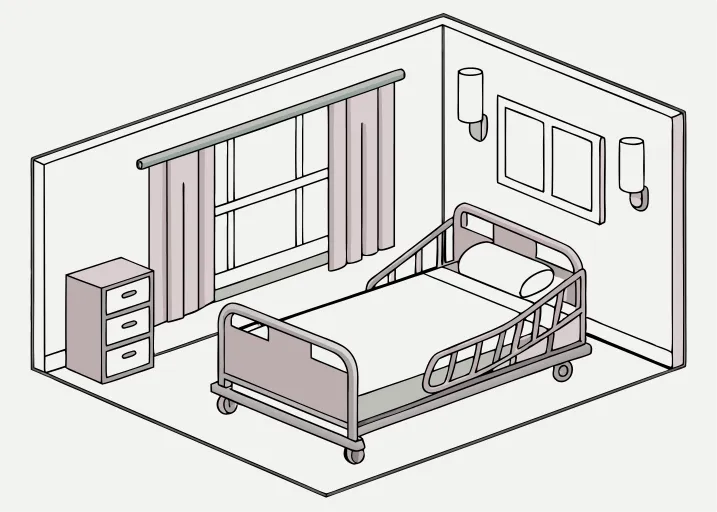
Lifestyle and Behavioral Approaches
Establishing good sleep habits can help reduce the frequency and severity of RBD episodes. These energy-boosting strategies can also improve overall sleep quality.
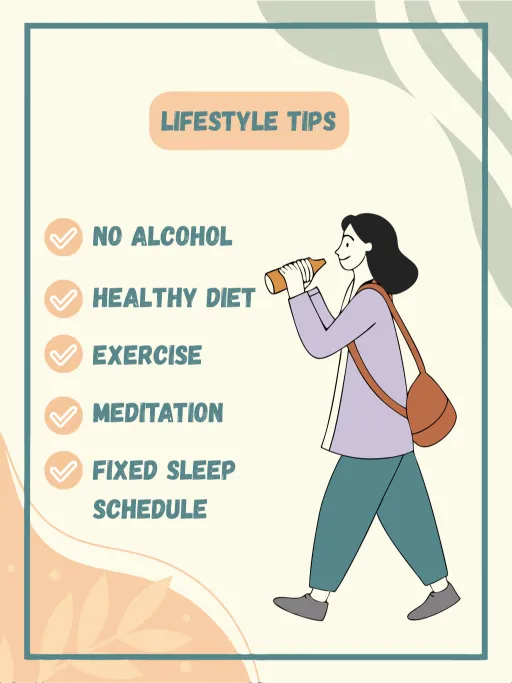
Sleep Hygiene Essentials
- Maintain a consistent sleep schedule, going to bed and waking up at the same time every day
- Create a relaxing bedtime routine to signal your body it’s time to sleep
- Keep your bedroom dark, quiet, and cool
- Limit screen exposure and blue light at least one hour before bedtime
Diet and Exercise Considerations
While specific dietary recommendations for RBD are limited, general healthy eating principles can support better sleep quality:
- Focus on a balanced diet rich in whole foods, emphasizing plant-based options
- Regular physical activity improves sleep quality, but exercise earlier in the day rather than close to bedtime
- Consider a Mediterranean-style diet, which may support brain health
Substances to Avoid
Certain substances can worsen RBD symptoms:
- Alcohol: Can fragment sleep and worsen RBD episodes
- Caffeine: Especially when consumed later in the day
- Certain medications: Some antidepressants (particularly SSRIs) may trigger or worsen RBD symptoms
Always consult your healthcare provider before stopping any prescribed medication. Understanding what causes fatigue can help you identify triggers that might affect your sleep.
The Mind-Body Connection: Managing REM Sleep and Depression
RBD can significantly impact mental well-being. Disrupted sleep often leads to daytime fatigue, decreased cognitive function, and compromised quality of life. The relationship between REM sleep and depression is bidirectional – depression and anxiety can worsen sleep quality and potentially make RBD symptoms worse.
This connection highlights the importance of addressing both physical and psychological aspects of RBD. Some patients benefit from psychological support, particularly if they experience distress related to their condition or its potential connection to neurodegenerative diseases.
Stress-Reduction Techniques
Mind-body practices can help manage stress and potentially improve sleep quality:
Meditation and Mindfulness: Regular meditation practice may help reduce sleep-interfering thoughts, lower stress and anxiety levels, and promote relaxation before bedtime.
Deep Breathing Exercises: Controlled breathing techniques can activate the parasympathetic nervous system, promoting relaxation:
- Practice diaphragmatic breathing for 5-10 minutes before bed
- Try the 4-7-8 breathing technique: inhale for 4 counts, hold for 7 counts, exhale for 8 counts
Yoga or Tai Chi: These gentle movement practices combine physical activity with mindfulness and controlled breathing. Yoga has been shown to improve sleep quality and reduce anxiety in people with sleep disorders. Evening yoga practices focused on relaxation may be particularly helpful for RBD patients.
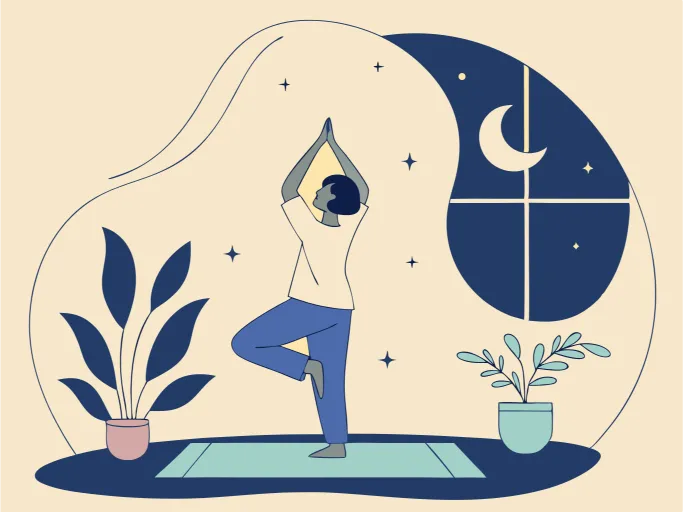
When to Seek Professional Help
While natural treatment for REM sleep behavior disorder can be effective, these approaches should complement, not replace, medical care. Regular follow-up with a sleep specialist is essential for:
- Monitoring symptom progression and treatment effectiveness
- Adjusting treatment plans as needed
- Watching for early signs of associated neurodegenerative conditions
Symptoms Requiring Immediate Medical Attention
Seek prompt medical care if you notice:
- Increasingly violent or dangerous sleep behaviors
- Injuries sustained during sleep episodes
- Significant worsening of symptoms despite treatment
- Development of daytime symptoms like tremor, balance problems, or cognitive changes that could indicate progression to a neurodegenerative disorder
Living Well with RBD
REM Sleep Behavior Disorder presents unique challenges, but a comprehensive approach combining natural treatments, safety measures, and lifestyle modifications can effectively manage symptoms and improve quality of life. Melatonin stands out as a well-supported natural treatment option with a favorable safety profile, while creating a safe sleep environment remains essential.
By addressing both physical and psychological aspects of RBD through proper sleep hygiene, stress reduction, and mindful living, many people can achieve significant symptom improvement. Remember that everyone’s experience with RBD is unique, and treatment plans should be tailored to individual needs and circumstances.
Maintaining good energy levels throughout the day and following healthy morning routines can also support better sleep quality at night.
Take Action for Better Sleep
If you suspect you or a loved one may have RBD, don’t wait to seek help. Consult with a sleep specialist to discuss the best treatment plan for you, including the potential role of natural approaches in your comprehensive care strategy. With proper diagnosis and management, most people with RBD can sleep more safely and comfortably, protecting both themselves and their loved ones.
Understanding the connection between blood sugar and energy levels and implementing strategies to beat afternoon fatigue can also contribute to better overall sleep patterns and reduced RBD symptoms.
Remember, effective natural treatment for REM sleep behavior disorder is possible with the right combination of approaches, professional guidance, and commitment to creating a safe sleep environment.


